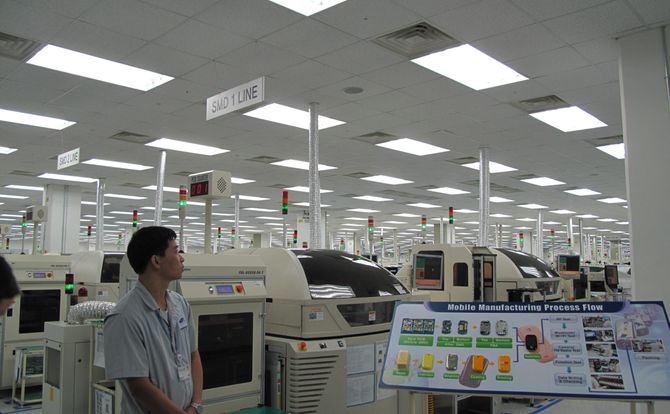Vietnam’s careful strategy
Vietnam is a textbook example of how a middle-sized power can learn to survive on one of the world’s most dangerous geopolitical fault lines.

Vietnam is perched on the eastern edge of the Indochinese peninsula, stretching north to south along the coast of the South China Sea. It is a coastal country, similar to Norway or Chile, extending more than 2,000 kilometers north to south, with a population of nearly 100 million.
While officially a communist country, it has developed a market economy. Economic growth regularly exceeds 6 percent on an annual basis. The Vietnamese economy largely depends on foreign trade, especially exports of consumer electronics, textiles and agricultural commodities such as coffee and rice.
In recent years, it has become a hub for Japanese and South Korean manufacturers. For example, the world’s biggest manufacturer of mobile phones – Samsung – produces some 40 percent of its output in Vietnam.
One legacy of the communist system, and the difficulty of change, is the strong position of Vietnam’s state-owned companies. Even so, the private sector is gradually becoming more important.
Preserving independence
In international relations, Vietnam’s main objective is to preserve its political and economic independence. Its main worry is an assertive China, its immediate neighbor on the land border to the north and – increasingly important – off its coastline in the South China Sea. As a trading country, Vietnam needs free access to the oceans. It has struggled for centuries to remain independent, fighting a four-week war against China as recently as 1979.
For defense, Vietnam has traditionally relied on Soviet and later Russian equipment, but has lately begun to cooperate intensively with suppliers from Israel and India.
Vietnam’s aim is to keep the peace – and its independence.
The country is a member of the ASEAN group and a co-founder of the Comprehensive and Progressive Agreement for Trans-Pacific Partnership (CPTPP), which succeeded the Trans-Pacific Partnership (TPP) after the United States withdrew in early 2017. Without the U.S., CPTPP is an 11-nation trade alliance, including Australia, Brunei, Canada, Chile, Japan, Malaysia, Mexico, New Zealand, Peru, Singapore and Vietnam. In the context of Vietnam’s position, we should remember that TPP, although internally a free trade zone, was also a protectionist entity toward third parties, especially China. This is also the case with CPTTP.
Strong signal
None of this means that Vietnam, in striving to preserve its independence, will allow itself to become politically dependent on the U.S. in matters of trade, economy or defense. Vietnam will continue its close economic relationship with China, which supplies 30 percent of its imports, especially intermediate goods and components for industrial products. The U.S. remains the main destination for Vietnamese exports, followed by the European Union.
This week, for the first time since the Vietnam War ended more than four decades ago, a U.S. aircraft carrier visited a Vietnamese port. The USS Carl Vinson’s historic call in Danang sends a strong signal to China not to overstep the bounds of acceptable behavior in the South China Sea.
Vietnam’s objective is to keep the peace – and its independence – along one of the most dangerous geopolitical fault lines in the world, where the interests of both global superpowers are in direct conflict. To hold its own, Vietnam needs a strong and growing economy. Consequently, it encourages new businesses and foreign investors.
This is the best strategy for middle-sized powers that want to stay out of conflicts. Vietnam has built a military deterrent while carefully seeking to balance one superpower against the other, so that neither can take control. While the country remains vulnerable geographically, this system of deterrence, nonalignment and a sound economy may secure Vietnam’s position in one of the world’s most dangerous regions, where titans may go to devastating war.
